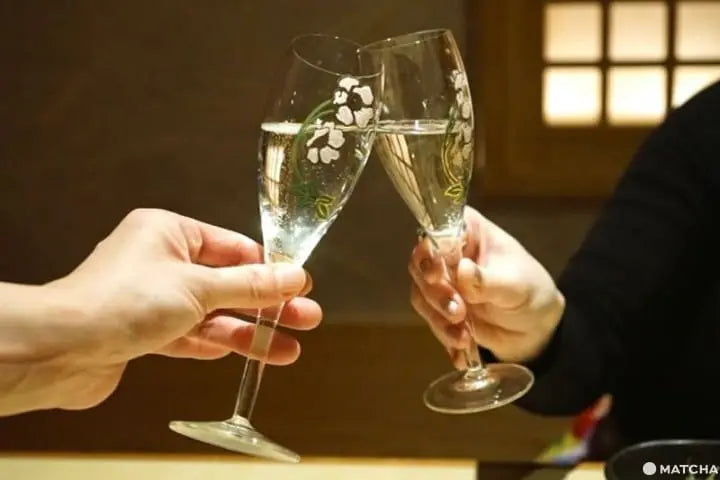
Sparkling Sake: A Primer to Japan's Bubbly Delight
Share
In recent years, a refreshing and effervescent twist on Japan's traditional rice wine has captured the hearts of sake enthusiasts and novices alike: sparkling sake. This bubbly delight has gained popularity for its unique and vibrant character, offering a new and exciting way to experience the time-honored tradition of sake. In this blog post, we'll provide a primer on sparkling sake, exploring its production, styles, and how best to enjoy this delightful beverage.
- The Birth of Bubbles
Sparkling sake, or "awa-zake" in Japanese, gets its vivacious bubbles from a secondary fermentation process that occurs in the bottle or tank. There are two primary methods used to create the effervescence in sparkling sake:
- Natural fermentation: This method involves sealing the sake with live yeast and koji in the bottle or tank, allowing the secondary fermentation to take place, producing carbon dioxide and creating bubbles.
- Carbonation: In this method, carbon dioxide is artificially injected into the sake, similar to the process used for many sparkling wines and soft drinks.
Regardless of the method used, the result is a lively and effervescent sake that offers a unique and captivating drinking experience.
- Diverse Styles, Dazzling Flavors
Sparkling sake comes in a variety of styles, ranging from dry to sweet, and from clear to cloudy. Some common styles of sparkling sake include:
- Muroka: This unfiltered sparkling sake is typically clear, with a bright and fresh flavor profile. The bubbles in muroka sake tend to be fine and delicate, similar to those found in a high-quality sparkling wine.
- Nigori: This cloudy, unfiltered sparkling sake contains rice particles that give it a distinctive milky appearance and a rich, creamy texture. Nigori sparkling sake often has a sweet and fruity flavor, making it a popular choice for those new to the world of sake.
- Junmai: This style of sparkling sake is made exclusively from rice, water, koji, and yeast, with no added alcohol. Junmai sparkling sake can range from dry to sweet, showcasing the natural flavors and characteristics of the rice used in its production.
- Serving Suggestions
Sparkling sake is best enjoyed chilled, allowing the lively bubbles and refreshing flavors to truly shine. Serve sparkling sake in a flute or a wine glass to showcase the effervescence and enhance the drinking experience. When opening a bottle of sparkling sake, be sure to chill it beforehand and open it slowly and carefully to avoid any overflow caused by the carbonation.
- Perfect Pairings
Sparkling sake's vibrant character and refreshing bubbles make it an excellent companion to a wide array of dishes. The natural acidity and effervescence of sparkling sake can help cut through the richness of creamy dishes, such as risotto or pasta alfredo, while the fruity and floral notes complement lighter fare, such as sushi, ceviche, or salads. For a truly indulgent experience, pair a sweet nigori sparkling sake with a decadent dessert like chocolate mousse or a fruit tart.
Sparkling sake is a delightful and invigorating take on Japan's traditional rice wine, offering a new and exciting way to experience the world of sake. With its lively bubbles, diverse styles, and versatile food pairings, sparkling sake is the perfect choice for celebrations, gatherings, or simply to enjoy on a warm, sunny day. So, pop open a bottle, raise a glass, and toast to the effervescent charm of sparkling sake. Kanpai!
